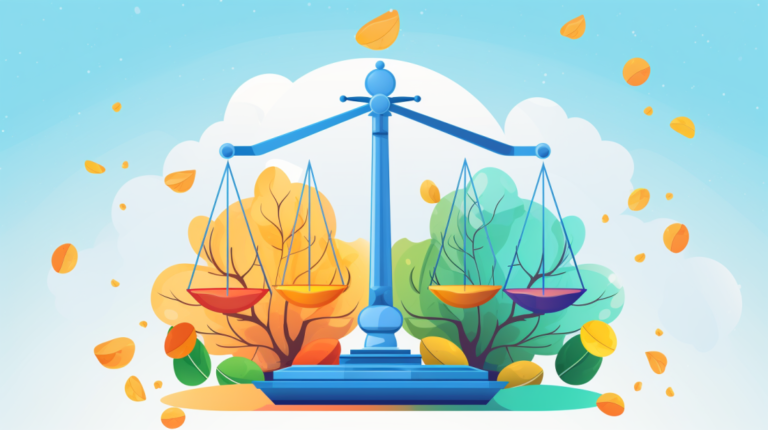How to Choose Between Secured vs Unsecured Debt Options

Key Takeaways
- Secured debt uses something you own as collateral. If you can’t pay, the lender takes this item.
- Unsecured debt does not use collateral. The lender trusts your promise to pay back.
- Your credit score helps decide which type of loan is best for you.
- Both loans have pros and cons. Look at them closely before choosing one or the other.
- Think about how much money you need, your financial status and how fast you can pay it back before making a choice.
Understanding Debt: Secured vs. Unsecured
 In evaluating your debt options, knowing the basic difference between secured and unsecured debt is crucial. Firstly, secured debts are tied to an asset which serves as collateral; if you default on payments, the lender can claim this asset to offset their loss. Common types of secured debts include mortgages or car loans where the house or vehicle serve as collateral respectively. On the flip side, unsecured debts don’t require any form of physical collateral; instead they’re typically backed by your creditworthiness alone with examples such as personal loans, student loans and most credit cards falling into this category. Understanding these differences is fundamental to making informed decisions about managing your financial liabilities.
In evaluating your debt options, knowing the basic difference between secured and unsecured debt is crucial. Firstly, secured debts are tied to an asset which serves as collateral; if you default on payments, the lender can claim this asset to offset their loss. Common types of secured debts include mortgages or car loans where the house or vehicle serve as collateral respectively. On the flip side, unsecured debts don’t require any form of physical collateral; instead they’re typically backed by your creditworthiness alone with examples such as personal loans, student loans and most credit cards falling into this category. Understanding these differences is fundamental to making informed decisions about managing your financial liabilities.Definition of Secured Debt
Secured debt is a type of loan or debt that you get by giving something you own to the lender. This thing you give is called collateral. Things like cars and houses are often used as collateral. The bank or lender can take this asset if you do not pay back your debt on time. Mortgages and car loans are good examples of secured debts because your home or car serves as security for the payment of the loan.Definition of Unsecured Debt
Unsecured debt is the kind of money you owe that isn’t tied to any asset. You don’t need to put up anything like a home or car as collateral for this type of loan. The lender lets you borrow based on your promise to pay back. They look at how good you’ve been with paying other loans and bills, which is called creditworthiness. High-interest rates go hand in hand with unsecured debt. This makes sense because lenders take bigger risks when no assets are backing the loans. If a payment is missed, there’s nothing they can grab onto for their safety net but your word! Examples of unsecured debts include medical bills and credit card balances among others.”.Key Differences Between Secured and Unsecured Debt
Secured and unsecured debts differ fundamentally in numerous ways. Crucially, secured debt requires collateral, an asset that a lender can claim if you default on your payment while unsecured debt demands no such security. Credit criteria for secured loans are generally more flexible since lenders have the assurance of collateral. On the flip side, getting approved for unsecured credit often requires a solid credit history due to the greater risk involved to lenders. In terms of interest rates, secured debts typically come with lower rates owing to their less risky nature compared to unsecured loans which carry higher interest rates due to increased risks faced by lenders. Lastly regarding borrowing limits, secured loans allow larger borrowings as they’re tied up against valuable assets whereas with unsecured loans you’ll often encounter smaller loan amounts based largely on your income and credit score.Collateral Requirements
 In a secured debt deal, you must give the lender something of value. This is called collateral. The lender can take this if you do not pay your loan back in time. For example, a house could be used as collateral for a mortgage loan. A car might be put up for an auto loan. In some deals, cash deposits may serve as collateral too! But be careful! If you miss your payments, the lender has the right to take your property or money away from you instead.
In a secured debt deal, you must give the lender something of value. This is called collateral. The lender can take this if you do not pay your loan back in time. For example, a house could be used as collateral for a mortgage loan. A car might be put up for an auto loan. In some deals, cash deposits may serve as collateral too! But be careful! If you miss your payments, the lender has the right to take your property or money away from you instead.Credit Criteria
Your credit score is key in the loan process. It tells a lender how well you can pay back money. For secured debt, a lower score may still get you a loan. The item that serves as collateral provides safety for the lender if you don’t pay. On another note, unsecured loans heavily rely on your creditworthiness. A high score means trust in paying back without any item to claim if you fail. So, always try to keep your score healthy and strong.Interest Rates
Secured debt often has lower interest rates. This is because the lender risks less. If I don’t pay back, they can take my collateral. On the other hand, unsecured debt may have higher interest rates. The lenders have nothing to fall back on if I can’t pay them back. They add risk with a higher rate. So, it costs more to get an unsecured loan or credit card than a secured one like a mortgage or auto loan.Borrowing Limits
Secured debts usually let you borrow more money. This is because they have something valuable, like your house or car, as a backup if you can’t pay. But unsecured loans don’t have this backup. So, lenders tend to lend less money in such cases. It’s all about the risk for the lender! The more risk there is for them, the less they will lend. Now you understand why borrowing limits differ between secured and unsecured debt!Examples of Secured and Unsecured Debt
We’ll examine some real-life scenarios of both secured and unsecured debt examples, like mortgages or credit cards. Secured debts might include auto loans or home equity lines of credit, while unsecured could encompass student loans or personal loans. It’s important to recognize the specifics of each kind and how they uniquely impact your financial situation and decision-making process. Stick around as we dive deeper into these examples.Examples of Secured Debt
Secured debt is a type of loan where you give an asset as backup. If you don’t pay back the money, the lender can take this asset. Here are some types of secured debt:- Mortgages: You get these loans to buy a house. The house is the collateral.
- Auto Loans: This is money you borrow to buy a car. The car stands in as collateral.
- Home Equity Loans: This loan lets you use your home’s value for money. Your home plays the role of collateral.
- Home Equity Line of Credit (HELOC): This allows you to use your home’s value for cash over time. The home is also the collateral here.
- Business Loans: Some businesses might use valuable items like office gear or real estate as their collateral.
Examples of Unsecured Debt
Unsecured debt is a type of loan not backed by any asset.- Credit cards are one kind of unsecured debt.
- Medical bills also fall into this category.
- Student loans are unsecured too.
- Personal loans from a bank or online lender can be unsecured.
- Some small business loans are unsecured if the borrower does not pledge an asset as collateral.
- A cell phone bill or utility bill is an example of unsecured debt if you don’t pay it on time and it goes to collections.
Pros and Cons of Secured and Unsecured Debt
 Secured and unsecured debt each carry their unique advantages and drawbacks. From lower interest rates with secured loans to freedom from collateral in unsecured ones, understanding these pros and cons can be crucial in determining what’s best for you. Continue reading to delve deep into this discussion and arm yourself with the knowledge needed to make an informed decision.
Secured and unsecured debt each carry their unique advantages and drawbacks. From lower interest rates with secured loans to freedom from collateral in unsecured ones, understanding these pros and cons can be crucial in determining what’s best for you. Continue reading to delve deep into this discussion and arm yourself with the knowledge needed to make an informed decision.Advantages of Secured Debt
Secured debt carries many gains for the borrower. Here are some points to look at:- The lender feels safe with secured debt, which means you may get lower interest rates.
- If your credit score isn’t great, don’t worry, you can still get secured loans.
- A car loan or a mortgage is an example of how common secured debt is in our lives.
- Your credit score will thank you in the future! With secured loans, your low credit score can slowly get better.
- Secured loans give lenders less stress about their money because they take something from you as back-up if you fail to pay them back.
Disadvantages of Secured Debt
Secured debt has some downsides you need to know about. One big drawback is the risk of losing your stuff. This includes key things like your car or house. If you do not pay the loan, these can be taken away by the lender. Another issue is how you use the loan. It often links to a certain item, which limits your options. Lastly, more cost piles up due to fees. These are for checking how much your items are worth before getting the loan.Advantages of Unsecured Debt
Unsecured debt has many benefits. Here are some of them:- No Collateral: Unsecured debt does not ask for any asset as a secure promise from your side. You don’t have to worry about losing your home, car or any other valuable item.
- Easy Process: Applying for unsecured debt is simpler and faster than secured ones. They often require less paperwork and time.
- Flexibility: Unsecured loans give you more freedom in spending the money. You can use it for any purpose — be it paying medical bills or buying new furniture.
- Protection of Assets: If you can’t pay back the loan, lenders can’t take your property right away. They will have to follow a legal way first which gives you some protection.
- Good for Credit Score: If you make timely repayments, unsecured loans can improve your credit score over time.
- Helps in Emergencies: Unsecured debts like credit cards can be used in emergencies when quick funds are needed.
- Available to Many People: Even if you don’t own many assets, you can still get unsecured debt based on your creditworthiness alone.
Disadvantages of Unsecured Debt
Unsecured debt also comes with its share of drawbacks.- Risk for Borrowers: Since it hinges on your credit, if you don’t pay back in time, your credit score goes down.
- High-Interest Rates: Unsecured loans can have much higher interest costs than secured ones.
- Strict Requirements: The rules to get an unsecured loan may be hard to meet, especially if your credit is bad.
- Low Loan Limits: Often, you can’t borrow as much money with unsecured debt as you can with secured debt.
- Tough Penalties: If you fail to pay, you could face piles of new fees and maybe even a lawsuit.
- More Stress: You have more to worry about when the bank does not have a thing they can take if you do not pay them back.
- Less Time To Pay: Unsecured debt often needs to be paid back quicker than secured loans.
How to Choose Between Secured and Unsecured Debt
 Choosing between secured and unsecured debt involves a careful look at your financial status, credit score, and capacity to pay back the borrowed amount. Start by assessing your current financial stability – do you have assets that could serve as collateral for a secure loan? Next, consider your credit score; if it’s high, you may qualify for favorable terms on an unsecured loan. However, if it’s low or non-existent, a secured loan is more likely to be approved. Finally, evaluate your ability to meet monthly payments without straining other areas of your budget because nothing derails dreams faster than defaulting on a loan. Remember that the choice will also depend on the rate of interest offered and how much you need to borrow.
Choosing between secured and unsecured debt involves a careful look at your financial status, credit score, and capacity to pay back the borrowed amount. Start by assessing your current financial stability – do you have assets that could serve as collateral for a secure loan? Next, consider your credit score; if it’s high, you may qualify for favorable terms on an unsecured loan. However, if it’s low or non-existent, a secured loan is more likely to be approved. Finally, evaluate your ability to meet monthly payments without straining other areas of your budget because nothing derails dreams faster than defaulting on a loan. Remember that the choice will also depend on the rate of interest offered and how much you need to borrow.Assessing Your Financial Situation
Look at your money. See how much you have and how much you owe. Do this often. Make sure you know all the details of your loans and bills. This can help you pick if secured or unsecured debt is better for you.Evaluating Your Credit Score
Your credit score plays a key role in getting loans. Lenders look at it to decide if you can pay back money on time. A high score means you have good credit history and are less risky for lenders. You often get lower interest rates with good scores. It’s wise to check your credit score before applying for any loan. This way, you know where you stand in the eyes of lenders. You can use free online tools to check your score, or ask your bank for help. If your score is low, work on improving it before moving ahead with borrowing plans.Considering Your Repayment Ability
You need to think about how much you can pay back. Look at your cash each month. Take away what you spend on food, rent, and other stuff. The money left is what you can use for debt payments. Secured debt may have smaller payments because it lasts a longer time than unsecured debt. But remember that with secured debt, if you don’t pay, they might take your stuff!Which Debt Option is Best for Balancing Retirement Savings?
Retirement savings and debt repayment often require a careful balance. One option is to prioritize debt repayment to avoid high interest costs. However, contributing to retirement savings early can lead to significant growth over time. Ultimately, the best approach depends on individual circumstances, such as interest rates, retirement goals, and financial stability. Seeking professional advice can help navigate this complex decision and ensure a balanced strategy for both retirement savings and debt repayment.
Conclusion
 Borrow smart! Look at your money and credit score. Think about how you will pay off the loan. Now, choose between secured or unsecured debt options that fit your needs best!
Borrow smart! Look at your money and credit score. Think about how you will pay off the loan. Now, choose between secured or unsecured debt options that fit your needs best!





